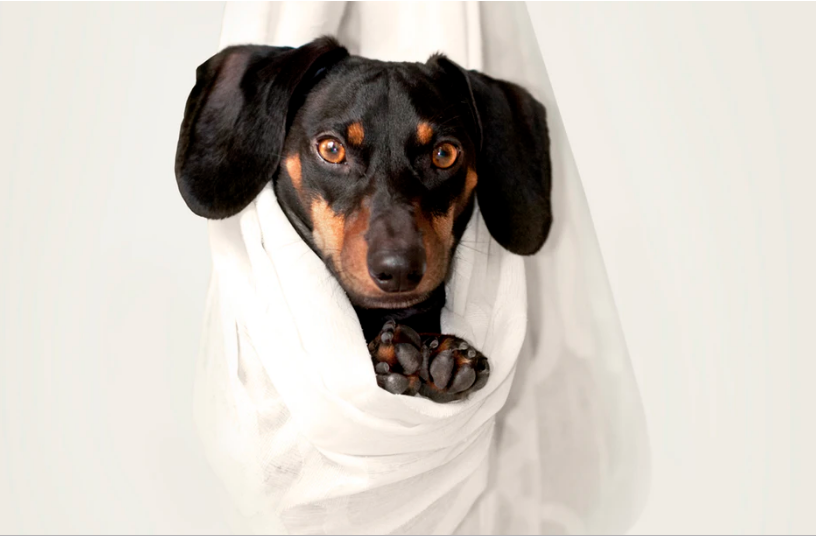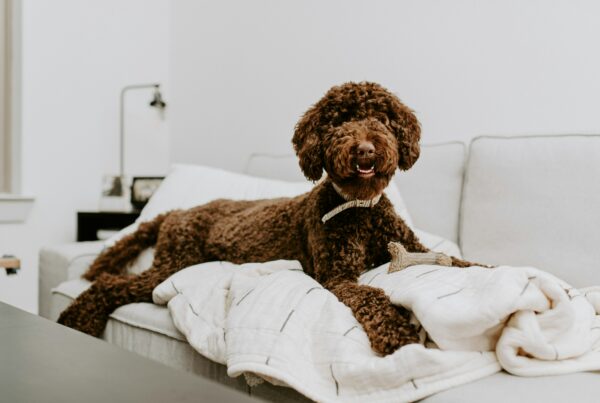Moving house is stressful. There’s so much to think about in terms of packing up the old house, ensuring important things are accessible right until the very end, organizing movers and storage if necessary.
But there’s one important step we should never forget. How is our dog going to handle this massive change? Pets don’t understand why everything around them is changing and why they’ve left their territory. This can lead to behavioral problems. But there are ways to help, and preparation is most definitely key.
Before the move
Key throughout the time you’re packing up is to keep your dog’s routine the same. Walk him at the same time you would normally and ensure he’s eating his meals at the same time too. Give them the same amount of attention and leave them be as you normally would. This helps to create a sense of normalcy for your pooch.
It’s also a good idea to visit your vet, especially if you are moving to a completely different area. Ensure your pet’s vaccinations are up-to-date and that you have a copy of your dog’s health records, and vaccination and desexing certificates. It’s also absolutely vital that you update your new address in the microchip database and change his identification tags. You can also take the time to ask the vet some tips on helping your dog through moving day.
Another tip is to try and get your pet to visit his new home before you move in. This gives him a bit of a chance to sniff around so it doesn’t come as a complete shock when you move. You can take him for a bit of a walk around the neighborhood too to give him a sense of the new smells, sights, and people. If there’s a park nearby that may become your regular, head there too. This may help with future feelings of anxiety your dog may experience.
Finally, pack his belongings last and try to keep the moving boxes out of his personal space. You want him to remain as comfortable as possible throughout the process and having moving boxes right by his bed is a sure-fire way to make him feel uncomfortable.

Moving day
When moving day rolls around, one possible idea is to see whether your dog can stay with friends or family for the day. This will ensure he doesn’t bolt while furniture is being loaded onto the van. It also means you can take your time to set up his bed, feeding station and toys so when he arrives at his new home, his creature comforts are all there.
Of course, we don’t always have this option. If not, try to confine him to a secure room with some treats, toys, his favorite blanket, and his water bowl. Make sure the room is quiet and familiar and put any travel carrier you plan on using into the room too so the fact he has to go in, doesn’t come as a shock to him.
Only pack your pet’s belongings on the day of the move and leave the bedding and blankets as-is for a couple of weeks after you move into your new home so he has some familiar smells.
If you’re traveling to your new home via car, make sure your dog is comfortable in the car he’ll be travelling in, and training for the trip. If you’re moving to a whole different city or even country, always check the always check the rules and regulations of travelling with your dog and remember, these may differ between states and countries. If you can, take your dog on a test run prior to moving day. It’s definitely a good idea to train your dog to accept the crate or carrier prior to moving day. If he’s not comfortable in it, this may only add to the distress. If you’re flying to your new home, ensure you use an airline-approved pet carrier like the ones reviewed by We’re All About Pets.
Another good tip is to keep a doggy bag on hand throughout the day so you always have access to his creature comforts. This should include your dog’s usual food, some toys and treats, leashes, his bed and blankets, and some extra special treats for his first day at his new home. Don’t forget the plastic bags and scoop as well as you never know when toileting may need to occur.
The settling process
You’ve moved, your possessions are all in the new home and now you just need to settle in. Well, so does your dog. Try to make this process as easy as possible by ensuring his routine stays exactly the same from day one – feed at the same time, lights out at the same time, walk at the same time. Dogs thrive on routine, so if he knows what to expect, it may help him settle into his new home.
Establish his sleeping and relaxing area as quickly as you can and make sure he knows where to find it. It’s also a nice idea to take him on a little tour of your new home. Now that all the familiar furniture is there, taking him from room to room to show him where everything is may help. Also, always check the cupboards for anything that may be harmful to your pup.
Third, train your dog to go to the toilet outside. Of course, your dog is toilet trained, but remember, this is a whole different environment that he needs to get used to and he needs your help. Adopt the same measures you did when your first toilet trained him including setting a schedule, taking him outside to use the bathroom at specific times, using specific and familiar commands and praising when he goes.
Finally, remember this is a difficult process for your dog. Any stress you may feel, he’s probably feeling it ten-fold because he doesn’t understand what’s going on. Go easy on him, give him lots of cuddles and attention, and play with him whenever you can. He’ll need a little extra love while he figures out what’s going on.




